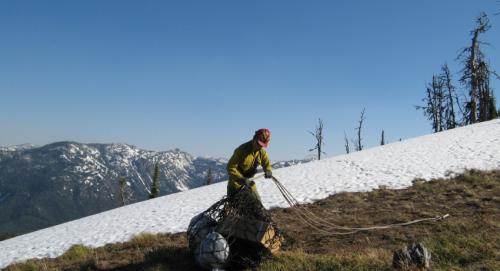5 TECHNOLOGY-BASED LONE WORKER SAFETY SOLUTIONS

ABOUT 75% OF EMPLOYEES IN NORTH AMERICA ARE MOBILE WORKERS. ADVANCES IN COMMUNICATIONS TECHNOLOGY MEANS THESE WORKERS CAN WORK ANYWHERE AT ANY TIME. THESE NEW TECHNOLOGIES ALSO MEAN THESE MOBILE WORKERS WILL WORK ALONE AT SOME POINT DURING THEIR WORKDAY. AS AN EMPLOYER YOU’RE OBLIGATED TO KEEP THEM SAFE.
Here is an overview of 5 common lone worker scenarios, and the technology-based safety solutions that will keep your employees safe.
WORKING REMOTELY WITH UNRELIABLE CELL COVERAGE
In remote settings with limited cellular connectivity, a lone worker safety solution must be able to switch seamlessly between cellular and satellite connectivity.
Crews may travel to oil and gas wells and construction where cellphone coverage is unreliable, or travel from one valley that has cell coverage to another valley that does not. They need a solution that provides comprehensive connectivity no matter where they are.
As well, while workers may be dispatched in pairs or as part of a crew, they will likely work alone, out of eye or voice contact with other team members. Your business must implement a plan to keep them safe.
In this scenario, the lone worker can use the following devices to check in, call for assistance, or send an SOS:
– A smart band paired with a cellphone app to send an SOS
– The cell phone app can also send regular updates and notifications over a cellular network
– A pendant, when connected to a vehicle equipped with a modem, can also be used to send an SOS
– When out of cellphone contact, a satellite device can be used to check in and send notifications to the monitor
LONE WORKER SAFETY SOLUTIONS FOR TRUCK DRIVERS
For truck drivers, a mobile smartphone app is the most efficient way to make scheduled check-ins with dispatch and safety managers, or request assistance and help.
While most trucking routes travel within range of cellphone networks, transport drivers traveling to remote locations can also connect with a satellite device to check in, request assistance or send an SOS.
LONE WORKER SAFETY SOLUTIONS FOR OUTDOOR SECURITY PROVIDERS
Some mobile security providers travel from place to place to protect buildings and assets in urban, rural and remote settings. They often work alone and must check in at regular intervals.
A typical lone worker safety solution for mobile security providers can include:
– A smart band paired with a cellphone app to send an SOS
– The cell phone app can also send regular updates over a cellular network
– A pendant, when connected to a vehicle equipped with a modem, can also be used to broadcast an SOS
– When out of cellphone contact, a satellite device can be used to check in and send notifications to the Control Center
LONE WORKER SAFETY IN THE SERVICE INDUSTRY
As with security providers, many workers in the service industry travel from location to location and work alone as they complete tasks. This can include janitorial and building maintenance workers, and tradespeople such as plumbers and electricians.
Common lone worker safety solutions for this group of workers include:
– Smartbands that are paired with a mobile app to send an SOS
– Connecting with a mobile app via cellular networks to check in or request assistance
TRAVELING EXECUTIVES AND SALES STAFF
This last category of “at-risk” employment is not typically regarded as being a “lone worker” scenario.
However, company executives, including management and sales staff will work alone from time to time, and therefore must be protected.
For example, business executives may travel by car to visit branch offices or to attend industry events. A lone worker check-in procedure must be implemented for these journeys. Sales staff or other employees traveling to visit client sites are also working alone at various times.
Common lone worker safety solutions for this group of workers include:
– Smartbands that are paired with a mobile app to send an SOS
– Connecting with a mobile app via cellular networks to check in or request assistance
KEEPING AT-RISK WORKERS SAFE
Thanks to mobile devices, workers are frequently untethered from working in one physical space. Many employees will start to work alone for at least part of their workday. The challenge for employers is to identify these “at-risk” workers, and then to develop and implement meaningful procedures to keep them safe.
Being aware of this shift in work is the first step in addressing worker safety. After that, employers must determine what lone worker safety solution is most effective for their employees.
Post Your Ad Here
Comments